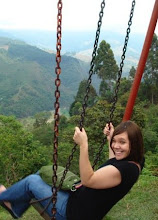Page 208:
1. B, because 8.9 = 8.90 (zeros at the end don't change the value), but 3.11 > 3.011 (because zeros before numbers that are after the decimal point DO change the value)
2. C, because 8.11 is bigger than 8.10, 8.01, or 8.00.
3. C, because if you look at the number 38.452 and you want to round to the nearest tenth, the 4 is in the tenth place. So you look behind the 4, at the five. Five is equal to 5, so you round 4 to 5. So the answer is 38.5
4. D, You need to add $3.25 and $0.95 because that is how much money he spent. When you add them together, you get $4.20.
5. A, You need to subtract 2.7 miles from 3.2. Carlotta has to walk 3.2 miles total, and she's already hiked 2.7 miles. To find out how many she has left, you have to subtract.
6. C. Remember to multiply without decimal points and add the decimal point at the end.
7. B, because you round 5.24 to 5 and 0.82 to 1. That means you multiply 5 x 1, which is 5. The closest answer possible is 4, so the answer is B.
8. C. If Neil can type 50 words in ONE minute, and you want to know how many he can type in 7.5 minutes, you need to multiply 50 x 7.5. That gives you 375!
9. A. Don't forget, when you divide decimals, you can add zeros onto the end of the dividend.
10. A, If Alyssa bought 4 pounds of oranges and saved $2.08 total, to find out how much she saved per pound you need to divide. You divide $2.08 by 4, and the answer is $0.52.
11. 0.493 rounded to the nearest tenth is 0.5, rounded to the nearest hundredth it is 0.49
12. The answers are A=0.5, B=1.3, C=2.4, and D=3.6
13. If one wedge of cheese costs $3.95, and the wheel has 8 pieces of cheese, the whole wheel of cheese costs 8 x $3.95, which is about $32. You can round 3.95 to 4, and multiply 4 x 8, which is 32.
14. Andrew's fish weighed more because Simon's two fish together weighed 5.18 kg, but Andrew's two fish together weighed 5.43 kg. You need to add each person's fish to find out how much they weigh together.
15. If you round all the numbers in the chart, most numbers are closer to 20, not 25. That means that $20/hour is a better estimate.
Page 334-335
1. There are 5 stars. 3 of them are colored. That means the fraction is 3/5.
5. The rectangle is divided into twelve parts. 8 parts are green. The original fraction is 8/12. We can divide 8/12 by 4 and get 2/3. 2/3 is the simplest form.
6. Line C, because 2 1/4 is more than 2, and 1/4 is halfway between the whole number and 1/2.
7. B, 1/2. That is because 0.5 is 5/10. We can divide 5/10 by 5, and it becomes 1/2.
8. B, because 1 1/3 is more than one, but not a LOT more than one.
9. In order from least to greatest: 1/4, 3/8, 1/2.
13. 1.4, 2 1/5, 3.7
15. 2/4 = 0.5, 5/10 = 0.5, 7/10 = 0.7, 3/4 = 0.75, 3/5 = 0.6
If you have any questions, please email me or leave a comment!

